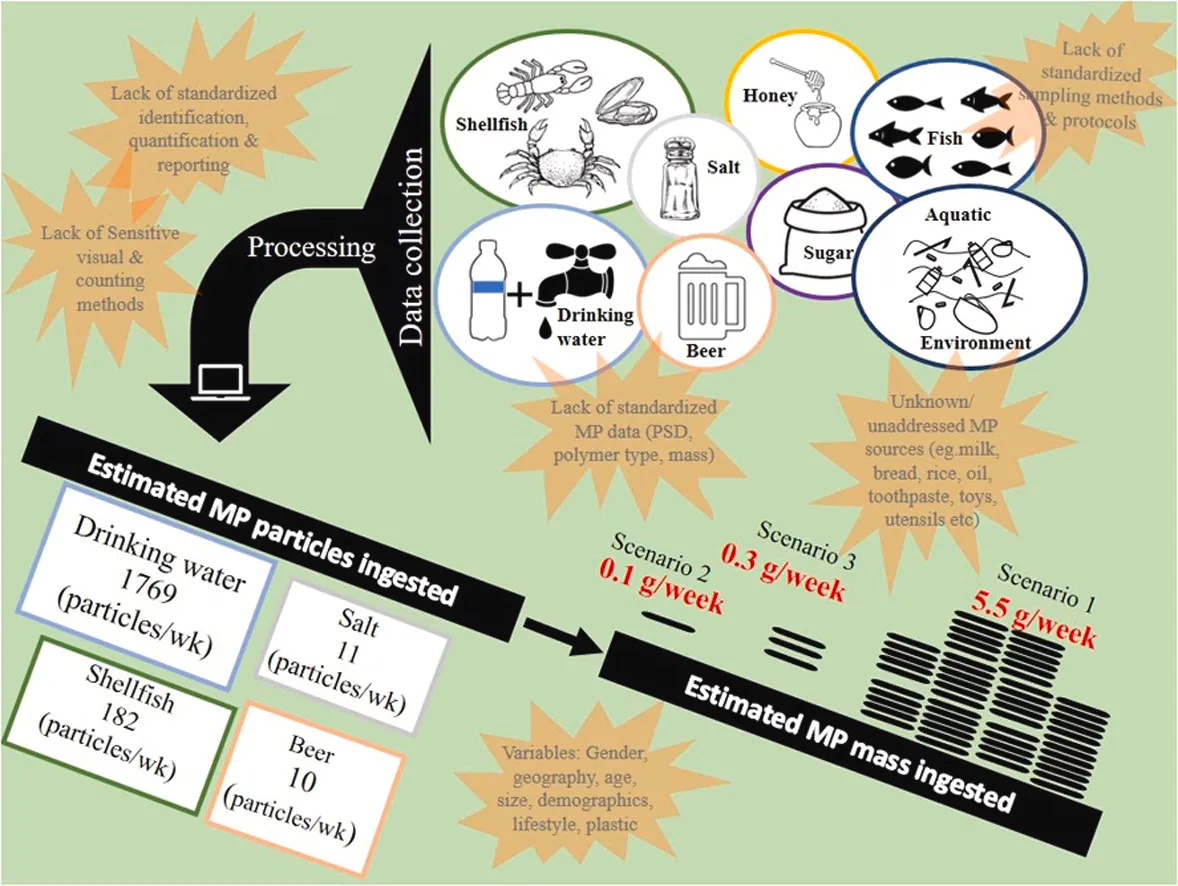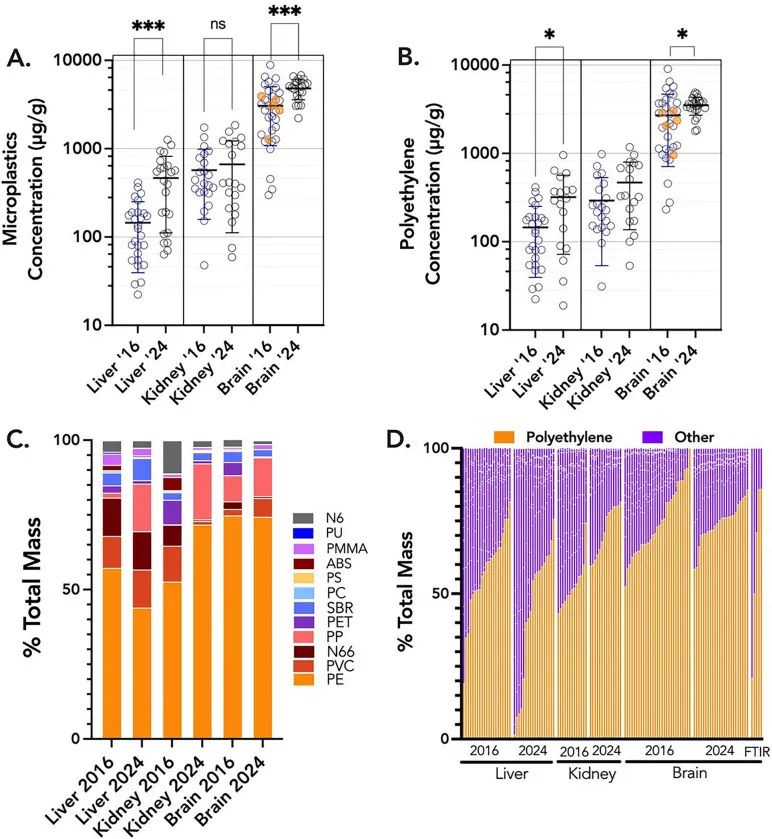Steadily rising concentrations of environmental micro- and nanoplastics (MNPs) which land in our body (either directly or passed through the food chain) drive concerns for human health. MNPs are mostly polymer-derived (by degradation) particulates ranging from 500 micrometers in diameter down to 1 nanometer.
The extent to which microplastics cause harm or toxicity is unclear, but should not be underestimated(1). Numerous studies link MNPs to various hazards like reduced fertility, cancer and dementia. Moreover, the amount of microplastics exposure to humans is not well defined, making the human health risk assessment even more difficult.
In a recent study pre-print(2) (which is still under peer review) by Campen at al., autopsy brain, livers and kidney samples from 50 deceased persons from Albuquerque, NM, collected in 2016 and in 2024 showed that all organs exhibited significant increases in MNPs from 2016 to 2024. In the study, pyrolysis gas chromatography-mass spectrometry was used to identify MNPs, a relatively new method that seems to be superior over purely microscopic evaluations that are mostly done so far and which can´t detect much of the small nanoplastic (<5 nm).
The brain samples (all from the frontal cortex) revealed much higher concentrations than liver or kidney, at 3057 μg/g in 2016 samples and 4806 μg/g (i.e. 0.48% by weight!) in 2024 samples, an increase of app. 50% over the 8 years! Polyethylene (PE) was found to be the predominant polymer in all tissues.
Why so much in the brain? The authors reason that the human brain has the second highest lipid content in the body (after adipose tissue) and MNPs are lipophilic and can easily pass the blood-brain barrier. Carotid plaques, which are also a lipid depot, had similar MNP-levels, as was shown by an earlier study.
It is not known if the MNPs in the brain accumulate lifelong or if they can get cleared as well. The lack of correlation with the decedent age suggests that an equilibrium occurs and that presumably dietary and lifestyle factors contribute to the between-subject variability in MNP concentrations. From a zebrafish study(3) we know that after constant exposure to polystyrene nanoplastics, uptake increased to a stable plateau whereby the maximal concentrations were increased proportionately with higher exposure concentrations.
Most alarmingly, the 12 brain samples from people who had died with dementia, including Alzheimer’s disease contained up to 10 times more plastic by weight than samples without an apparent brain damage(4) leading to the conclusion that excess amount of MNPs in the brain may facilitate dementia.

src
Since the introduction of plastic in the 1950s the global production of plastics is rising every year. The persistent mismanagement of plastic waste leads to a constantly increasing accumulation of micro- and nanoplastics in the environment and thus finally in our bodies through various exposure pathways. Even worse, microplastics are often associated with additives, heavy metals, pharmaceuticals, pesticides and various other organic pollutants. In a metanalysis from 2021(5) it was estimated that globally on average, humans may ingest 0.1–5 g of microplastics weekly!

src
When will mankind react? When 1% of our brain contains microplastic? 5%?
Apparently currently this is not in focus. All eyes are on the "evil" CO2...
What you can do?
- Prefer fresh food to plastic-wrapped and/or highly processed food
- Avoid plastic-bottled water (and soft drinks)
- Heat increases degradation of plastics, so avoid drinking hot beverages in plastic-lined throw-away cups, bring your own (stainless steel) mug instead
- Avoid heating plastic containers in (microwave) ovens, use glass or ceramic vessels instead
- Get rid of your non-stick/teflon pans, plastic cutting boards and plastic food jars
- Avoid tea bags, drink loose-leaf tea instead
- To reduce microplastic shedding from your clothes, wash them less frequently, prefer natural to synthetic clothing materials like polyester and nylon
- More tips here
Sources:
(1) https://www.sciencedirect.com/science/article/abs/pii/S0301479724000252
(2) https://www.ncbi.nlm.nih.gov/pmc/articles/PMC11100893/ (pre-print)
(3) https://pubmed.ncbi.nlm.nih.gov/37321508/
(4) https://www.theguardian.com/environment/article/2024/aug/21/microplastics-brain-pollution-health
(5) https://www.sciencedirect.com/science/article/abs/pii/S0304389420319944
